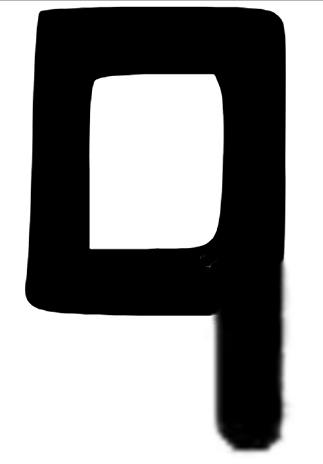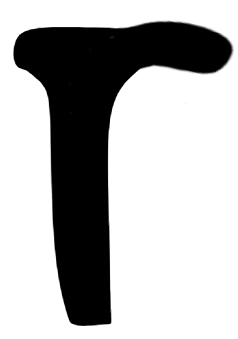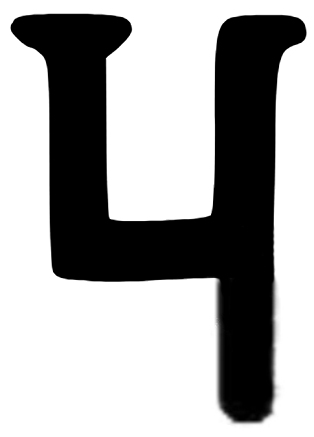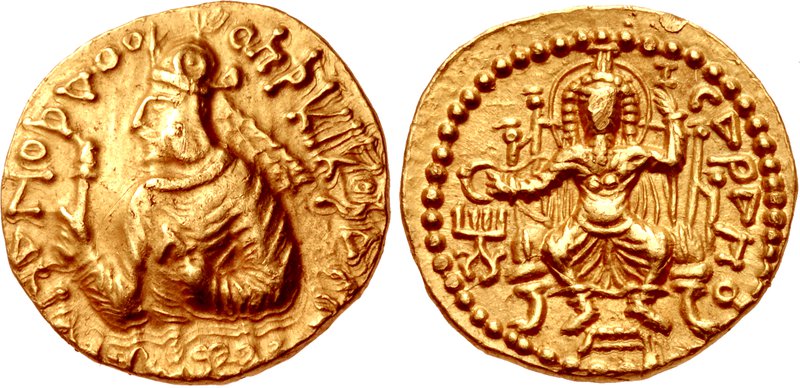Huvishka on:
[Wikipedia]
[Google]
[Amazon]
Huvishka ( Kushan: Οοηϸκι, ''Ooēški'', 

 ', '; Kharosthi: 𐨱𐨂𐨬𐨅𐨮𐨿𐨐 ', ') was the emperor of the Kushan Empire from the death of
', '; Kharosthi: 𐨱𐨂𐨬𐨅𐨮𐨿𐨐 ', ') was the emperor of the Kushan Empire from the death of
 Huvishka was the son of Kanishka. His reign is also known as the golden age of Kushan rule.
Huvishka was the son of Kanishka. His reign is also known as the golden age of Kushan rule.
File:Amitabha Buddha inscription in the year 26 of Huvishka.jpg, Earliest known "






 "''Bu-ddha-sya A-mi-tā-bha-sya''" ("of Amitabha Buddha") in
"''Bu-ddha-sya A-mi-tā-bha-sya''" ("of Amitabha Buddha") in 











 ),
), 












 ...
...
 Huvishka also incorporates in his coins for the first and only time in Kushan coinage the Hellenistic-Egyptian
Huvishka also incorporates in his coins for the first and only time in Kushan coinage the Hellenistic-Egyptian
File:Huvishka with god Serapis ("Sarapo").jpg, Another coin of Huvishka holding a scepter, with, on the reverse, deity
Brahmi
Brahmi (; ; ISO: ''Brāhmī'') is a writing system of ancient South Asia. "Until the late nineteenth century, the script of the Aśokan (non-Kharosthi) inscriptions and its immediate derivatives was referred to by various names such as 'lath' ...
: 

 ', '; Kharosthi: 𐨱𐨂𐨬𐨅𐨮𐨿𐨐 ', ') was the emperor of the Kushan Empire from the death of
', '; Kharosthi: 𐨱𐨂𐨬𐨅𐨮𐨿𐨐 ', ') was the emperor of the Kushan Empire from the death of Kanishka
Kanishka I (Sanskrit: कनिष्क, '; Greco-Bactrian: Κανηϸκε ''Kanēške''; Kharosthi: 𐨐𐨞𐨁𐨮𐨿𐨐 '; Brahmi: '), or Kanishka, was an emperor of the Kushan dynasty, under whose reign (c. 127–150 CE) the empire ...
(assumed on the best evidence available to be in 150 CE) until the succession of Vasudeva I
Vāsudeva I ( Kushano Bactrian: Βαζοδηο ''Bazodeo''; Middle Brahmi script: ''Vā-su-de-va'', Chinese: 波調 ''Bodiao''; fl. 200 CE) was a Kushan emperor, last of the "Great Kushans." Named inscriptions dating from year 64 to 98 of Kan ...
about thirty years later.
His rule was a period of consolidation for the Empire. Huvishka's territory encompassed Balkh in Bactria to Mathura
Mathura () is a city and the administrative headquarters of Mathura district in the Indian state of Uttar Pradesh. It is located approximately north of Agra, and south-east of Delhi; about from the town of Vrindavan, and from Govardhan. ...
in India
India, officially the Republic of India (Hindi: ), is a country in South Asia. It is the seventh-largest country by area, the second-most populous country, and the most populous democracy in the world. Bounded by the Indian Ocean on the so ...
, locations where it is known that he minted his coinage. Gold coins and amulets in his effigy were found as far as Pataliputra
Pataliputra ( IAST: ), adjacent to modern-day Patna, was a city in ancient India, originally built by Magadha ruler Ajatashatru in 490 BCE as a small fort () near the Ganges river.. Udayin laid the foundation of the city of Pataliputra at the ...
and Bodh Gaya, including one such amulet as an offering under the Enlightenment Throne of the Buddha in Bodh Gaya, suggesting with other finds of Kushan coins in the area that Kushan rule may have extended this far east. His reign seems to have been essentially peaceful, consolidating Kushan power in northern India, and moving the centre of the Kushan Empire to the southern capital city of Mathura.
Religion
Mahayana Buddhism
The reign of Huvishka corresponds with the first known epigraphic evidence of the Buddha Amitabha, on the bottom part of a 2nd-century statue which has been found in Govindo-Nagar, and now at theMathura Museum
__NOTOC__
Government Museum, Mathura, commonly referred to as Mathura museum, is an archaeological museum in Mathura city of Uttar Pradesh state in India. The museum was founded by then collector of the Mathura district, Sir F. S. Growse in 1 ...
. The statue is dated to "the 28th year of the reign of Huvishka", and dedicated to "Amitabha Buddha" by a family of merchants.
There is also some evidence that Huvishka was a follower of Mahāyāna Buddhism
''Mahāyāna'' (; "Great Vehicle") is a term for a broad group of Buddhist traditions, texts, philosophies, and practices. Mahāyāna Buddhism developed in India (c. 1st century BCE onwards) and is considered one of the three main existing bra ...
. A Sanskrit
Sanskrit (; attributively , ; nominally , , ) is a classical language belonging to the Indo-Aryan branch of the Indo-European languages. It arose in South Asia after its predecessor languages had diffused there from the northwest in the late ...
manuscript fragment in the Schøyen Collection
__NOTOC__
The Schøyen Collection is one of the largest private manuscript collections in the world, mostly located in Oslo and London. Formed in the 20th century by Martin Schøyen, it comprises manuscripts of global provenance, spanning 5,000 y ...
describes Huvishka as one who has "set forth in the Mahāyāna."
Some reliefs from Gandhara are also thought to portray Huvishka making donations to the Buddha.
Huvishka is widely attested to have supported Buddhism, but the Buddha does not appear on his coinage, possibly out of respect to the Buddha.
Mahayana
''Mahāyāna'' (; "Great Vehicle") is a term for a broad group of Buddhist traditions, texts, philosophies, and practices. Mahāyāna Buddhism developed in India (c. 1st century BCE onwards) and is considered one of the three main existing br ...
" inscription: inscribed pedestal with the first known occurrence of the name of " Amitabha Buddha" in the "year 26" (153 CE, first year of Huvishka)
File:Amitabha Buddha inscription in the year 26 of Huvishka Inscription Buddhasya Amitabhasya.jpg, First known Mahayana inscription: words 


Brahmi script
Brahmi (; ; ISO: ''Brāhmī'') is a writing system of ancient South Asia. "Until the late nineteenth century, the script of the Aśokan (non-Kharosthi) inscriptions and its immediate derivatives was referred to by various names such as 'lath' ...
in the inscription.
File:Mathura sculpture Huvishka year 33.jpg, Fragment of a Bodhisattva sculpture inscribed "in the year 33" (𑀲𑀁𑁝𑁔) of "the Great King, son of God, Huvishka" (''Mahārājasya Devaputrasya Huviṣka'', 




 ),
), Art of Mathura
The Art of Mathura refers to a particular school of Indian art, almost entirely surviving in the form of sculpture, starting in the 2nd century BCE, which centered on the city of Mathura, in central northern India, during a period in which Bud ...
.
File:Iscrizione del regno di huvishka dei kushana sul piedistrallo di una statua di buddha, da mathura, uttar pradesh, 123 dc.jpg, Pedestal of a Buddha statue, with inscription in the name of Huvishka "in the year 45" (𑀲𑀁𑁞𑁔). Starts with ''Mahārājasya Huviṣkasya Devaputrasya...'', 





Uttar Pradesh
Uttar Pradesh (; , 'Northern Province') is a state in northern India. With over 200 million inhabitants, it is the most populated state in India as well as the most populous country subdivision in the world. It was established in 1950 ...
. Chhatrapati Shivaji Maharaj Vastu Sangrahalaya
Chhatrapati Shivaji Maharaj Vastu Sangrahalaya, (CSMVS) originally named Prince of Wales Museum of Western India, is a museum in Mumbai (Bombay) which documents the history of India from prehistoric to modern times.
It was founded during Briti ...
Museum.
Graeco-Roman deities
 Huvishka also incorporates in his coins for the first and only time in Kushan coinage the Hellenistic-Egyptian
Huvishka also incorporates in his coins for the first and only time in Kushan coinage the Hellenistic-Egyptian Serapis
Serapis or Sarapis is a Graeco-Egyptian deity. The cult of Serapis was promoted during the third century BC on the orders of Greek Pharaoh Ptolemy I Soter of the Ptolemaic Kingdom in Egypt as a means to unify the Greeks and Egyptians in his r ...
(under the name ''ϹΑΡΑΠΟ'', "Sarapo"). Since Serapis was the supreme deity of the pantheon of Alexandria
Alexandria ( or ; ar, ٱلْإِسْكَنْدَرِيَّةُ ; grc-gre, Αλεξάνδρεια, Alexándria) is the second largest city in Egypt, and the largest city on the Mediterranean coast. Founded in by Alexander the Great, Alexandri ...
in Egypt
Egypt ( ar, مصر , ), officially the Arab Republic of Egypt, is a transcontinental country spanning the northeast corner of Africa and southwest corner of Asia via a land bridge formed by the Sinai Peninsula. It is bordered by the Medit ...
, this coin suggests that Huvishka had as strong orientation towards Roman Egypt, which may have been an important market for the products coming from the Kushan Empire.
Another coin possibly depicts the Goddess Roma
Roma or ROMA may refer to:
Places Australia
* Roma, Queensland, a town
** Roma Airport
** Roma Courthouse
** Electoral district of Roma, defunct
** Town of Roma, defunct town, now part of the Maranoa Regional Council
*Roma Street, Brisbane, a ...
("Roma aeterna"), under the name "Rishti
Arshtat ( ae, 𐬀𐬭𐬱𐬙𐬁𐬝) is the Avestan language name of a Zoroastrian principle and signifies either "justice". or "honesty.", col. 205. As a substantive, ''arshtat'' designates the divinity Arshtat, the hypostasis of "Rectitude" ...
" (Greek: ΡΙϷΤ), or "Riom" (Greek: ΡΙΟΜ).
Serapis
Serapis or Sarapis is a Graeco-Egyptian deity. The cult of Serapis was promoted during the third century BC on the orders of Greek Pharaoh Ptolemy I Soter of the Ptolemaic Kingdom in Egypt as a means to unify the Greeks and Egyptians in his r ...
(''ϹΑΡΑΠΟ'', "Sarapo")
File:Dinar, Kushan Empire, Depiction of Hercules, 152-192 AD.jpg, Coin of Huvishka. ''Obverse'': ϷΑΟΝΑΝΟϷΑΟ ΟΟΗϷΚΙ ΚΟϷΑΝΟ (''Shaonanoshao Ooishki Koshano'', "King of kings, Huvishka the Kushan"). ''Reverse'': Herakles
Heracles ( ; grc-gre, Ἡρακλῆς, , glory/fame of Hera), born Alcaeus (, ''Alkaios'') or Alcides (, ''Alkeidēs''), was a divine hero in Greek mythology, the son of Zeus and Alcmene, and the foster son of Amphitryon.By his adoptive ...
with legend ΗΡΑΚΙΛΟ (''Erakilo'').
File:CoinOfHuvishkaWithRishtiAsRoma.JPG, Possible depiction of "Roma Aeterna". The legend has been variously read ''Riom'' (Greek: ΡΙΟΜ), or more recently ''Rishti
Arshtat ( ae, 𐬀𐬭𐬱𐬙𐬁𐬝) is the Avestan language name of a Zoroastrian principle and signifies either "justice". or "honesty.", col. 205. As a substantive, ''arshtat'' designates the divinity Arshtat, the hypostasis of "Rectitude" ...
'' (Greek: ΡΙϷΤ).
Iranian deities
Huvishka is also known to have included Iranian deities in hispantheon
Pantheon may refer to:
* Pantheon (religion), a set of gods belonging to a particular religion or tradition, and a temple or sacred building
Arts and entertainment Comics
*Pantheon (Marvel Comics), a fictional organization
* ''Pantheon'' (Lone S ...
. Between 164 and 174, he established a temple to '' Pharro'' ("Royal splendour")-''Ardoxsho
Ardoksho (Bactrian script Αρδοχϸο), also Romanised as Ardochsho, Ardokhsho and Ardoxsho, the Iranic goddess of wealth was a female deity of the Kushan Empire, in Central and South Asia during the early part of the 1st millennium CE. She ...
'' in the stronghold of Ayrtam, near Termez
Termez ( uz, Termiz/Термиз; fa, ترمذ ''Termez, Tirmiz''; ar, ترمذ ''Tirmidh''; russian: Термез; Ancient Greek: ''Tàrmita'', ''Thàrmis'', ) is the capital of Surxondaryo Region in southern Uzbekistan. Administratively, it i ...
, according to the ''Ayrtam inscription''. He also issued numerous coins in the name of these deities. Many more Iranian deities are also known from his coinage, such as ''Miiro
''Mitra'' (Proto-Indo-Iranian: ''*mitrás'') is the name of an Indo-Iranian divinity from which the names and some characteristics of Rigvedic Mitrá and Avestan Mithra derive.
The names (and occasionally also some characteristics) of these tw ...
'' ( Mitra), '' Mao'' (the Lunar deity Mah), ''Nana
Nana, Nanna, Na Na or NANA may refer to:
People and fictional characters
* Nana (given name), including a list of people and characters with the given name
* Nana (surname), including a list of people and characters with the surname
* Nana ( ...
'' (Anahita
Anahita is the Old Persian form of the name of an Iranian goddess and appears in complete and earlier form as ('), the Avestan name of an Indo-Iranian cosmological figure venerated as the divinity of "the Waters" (Aban) and hence associate ...
), ''Atsho
Atar, Atash, or Azar ( ae, 𐬁𐬙𐬀𐬭, translit=ātar) is the Zoroastrian concept of holy fire, sometimes described in abstract terms as "burning and unburning fire" or "visible and invisible fire" (Mirza, 1987:389). It is considered to b ...
'' (Atar
Atar, Atash, or Azar ( ae, 𐬁𐬙𐬀𐬭, translit=ātar) is the Zoroastrian concept of holy fire, sometimes described in abstract terms as "burning and unburning fire" or "visible and invisible fire" (Mirza, 1987:389). It is considered to ...
, "The Royal fire"). Another Zoroastrian
Zoroastrianism is an Iranian religion and one of the world's oldest organized faiths, based on the teachings of the Iranian-speaking prophet Zoroaster. It has a dualistic cosmology of good and evil within the framework of a monotheistic ...
deity, the supreme god ''Ooromozdo'' ( Ahura Mazda), and ''Mazdo oana'' ("Mazda
, commonly referred to as simply Mazda, is a Japanese multinational automotive manufacturer headquartered in Fuchū, Hiroshima, Japan.
In 2015, Mazda produced 1.5 million vehicles for global sales, the majority of which (nearly one m ...
the victorious") also appears. Other Zoroastrian deities include ''Rishti
Arshtat ( ae, 𐬀𐬭𐬱𐬙𐬁𐬝) is the Avestan language name of a Zoroastrian principle and signifies either "justice". or "honesty.", col. 205. As a substantive, ''arshtat'' designates the divinity Arshtat, the hypostasis of "Rectitude" ...
'' ("Uprightness", Arshtat
Arshtat ( ae, 𐬀𐬭𐬱𐬙𐬁𐬝) is the Avestan language name of a Zoroastrian principle and signifies either "justice". or "honesty.", col. 205. As a substantive, ''arshtat'' designates the divinity Arshtat, the hypostasis of "Rectitude" ...
), '' Ashaeixsho'' ("Best righteousness", Asha Vahishta
Asha (; also arta ; ae, 𐬀𐬴𐬀, translit=aṣ̌a/arta) is a Zoroastrian concept with a complex and highly nuanced range of meaning. It is commonly summarized in accord with its contextual implications of 'truth' and 'right(eousness)', 'ord ...
), the Lunar deity Mah (''Mao''), ''Shaoreoro
Kshatra Vairya (Avestan: 𐬑𐬱𐬀𐬙𐬭𐬀 𐬬𐬀𐬌𐬭𐬌𐬌𐬀 ''xšatra vairiia'', also Šahrewar Middle Persian: 𐭱𐭲𐭥𐭩𐭥𐭥,Khshathra Vairya
Kshatra Vairya (Avestan: 𐬑𐬱𐬀𐬙𐬭𐬀 𐬬𐬀𐬌𐬭𐬌𐬌𐬀 ''xšatra vairiia'', also Šahrewar Middle Persian: 𐭱𐭲𐭥𐭩𐭥𐭥,
File:Huvishka. Circa CE 152-192 diademed.jpg, Coin of Kushan ruler Huvishka diademed, with deity Pharro ("ΦΑΡΡΟ"). Circa CE 152-192
File:Kushan king Huvishka coin.jpg, Coin of Kushan ruler Huvishka diademed, with deity
Ardoxsho
Ardoksho (Bactrian script Αρδοχϸο), also Romanised as Ardochsho, Ardokhsho and Ardoxsho, the Iranic goddess of wealth was a female deity of the Kushan Empire, in Central and South Asia during the early part of the 1st millennium CE. She ...
. Circa CE 152-192
File:Huvishka with Athsho.jpg, Huvishka with '' Atosho'' (ΑΘΟϷΟ "The Royal fire").
File:Huvihska with Ahuramazda.jpg, Huvihska with Ahuramazda
Ahura Mazda (; ae, , translit=Ahura Mazdā; ), also known as Oromasdes, Ohrmazd, Ahuramazda, Hoormazd, Hormazd, Hormaz and Hurmuz, is the creator deity in Zoroastrianism. He is the first and most frequently invoked spirit in the ''Yasna''. ...
(ωΡΟΜ, ''Orom do').
File:Huvishka with Rishti.jpg, Huvishka with ''Rishti
Arshtat ( ae, 𐬀𐬭𐬱𐬙𐬁𐬝) is the Avestan language name of a Zoroastrian principle and signifies either "justice". or "honesty.", col. 205. As a substantive, ''arshtat'' designates the divinity Arshtat, the hypostasis of "Rectitude" ...
''.
File:Huvishka with Ashaiexsho.jpg, Huvishka with "Asha Vahishta
Asha (; also arta ; ae, 𐬀𐬴𐬀, translit=aṣ̌a/arta) is a Zoroastrian concept with a complex and highly nuanced range of meaning. It is commonly summarized in accord with its contextual implications of 'truth' and 'right(eousness)', 'ord ...
" (ΑϷΑΕΙΧϷΟ, ''Ashaiexsho'').
File:Huvishka with Mao.jpg, Huvishka with the Lunar deity Mah (''Mao''). The lunar crescent appears behind the shoulders.
File:Huvishka and Shaoreoro.jpg, Huvishka with ''Shaoreoro
Kshatra Vairya (Avestan: 𐬑𐬱𐬀𐬙𐬭𐬀 𐬬𐬀𐬌𐬭𐬌𐬌𐬀 ''xšatra vairiia'', also Šahrewar Middle Persian: 𐭱𐭲𐭥𐭩𐭥𐭥,Khshathra Vairya
Kshatra Vairya (Avestan: 𐬑𐬱𐬀𐬙𐬭𐬀 𐬬𐬀𐬌𐬭𐬌𐬌𐬀 ''xšatra vairiia'', also Šahrewar Middle Persian: 𐭱𐭲𐭥𐭩𐭥𐭥,
 Huvishka is known to have restored a temple in
Huvishka is known to have restored a temple in
/ref> In a departure from his predecessor Kanishka, Huvishka also added ''
File:Huvishka with Ommo and Oesho.jpg, upright=1.5, Coin of Huvishka with the divine couple ''Ommo'' ("ΟΜΜΟ",
Online Catalogue of Huvishka's CoinageCoins of Huvishka
Was Huvishka sole king of the Kushan Empire
The Devaluation of the Coinage of Kanishka {{Kushans Kushan emperors 2nd-century Indian monarchs
Indian deities
 Huvishka is known to have restored a temple in
Huvishka is known to have restored a temple in Mathura
Mathura () is a city and the administrative headquarters of Mathura district in the Indian state of Uttar Pradesh. It is located approximately north of Agra, and south-east of Delhi; about from the town of Vrindavan, and from Govardhan. ...
, where provisions were made for hospitality towards the Brahmans
Brahmin (; sa, ब्राह्मण, brāhmaṇa) is a varna as well as a caste within Hindu society. The Brahmins are designated as the priestly class as they serve as priests (purohit, pandit, or pujari) and religious teachers (guru o ...
. Some of the coins of Huvishka also featured Maaseno on his coins, the Kushan incarnation of the Hindu god Karttikeya
Kartikeya ( sa, कार्त्तिकेय, Kārttikeya), also known as Skanda, Subrahmanya, Shanmukha (), and Murugan ( ta, முருகன்), is the Hindu god of war. He is the son of Parvati and Shiva, the brother of Ganesha ...
, or Skanda, whose epithet was "Mahasena". This god being particularly important to the Yaudheya
Yaudheya (Brahmi script: 𑀬𑁅𑀥𑁂𑀬) or Yoddheya Gana (Yoddheya Republic) was an ancient militant confederation. The word Yaudheya is a derivative of the word from yodha meaning warriors.“Yaudheyas.” Ancient Communities of the Hima ...
s, it may have been incorporated into Kushan coinage when the Kushans expanded into Yaudheya territory in order to establish control of the Mathura
Mathura () is a city and the administrative headquarters of Mathura district in the Indian state of Uttar Pradesh. It is located approximately north of Agra, and south-east of Delhi; about from the town of Vrindavan, and from Govardhan. ...
area. It may also have been adopted as a way to appease the warlike Yaudheyas. In effect, the Kushans
The Kushan Empire ( grc, Βασιλεία Κοσσανῶν; xbc, Κυϸανο, ; sa, कुषाण वंश; Brahmi: , '; BHS: ; xpr, 𐭊𐭅𐭔𐭍 𐭇𐭔𐭕𐭓, ; zh, 貴霜 ) was a syncretic empire, formed by the Yuezhi, ...
became the suzerains of the Yaudheyas in the area.Indian Sculpture: Circa 500 B.C.-A.D. 700, Los Angeles County Museum of Art, Pratapaditya Pal, University of California Press, 1986, p.7/ref> In a departure from his predecessor Kanishka, Huvishka also added ''
Oesho
Oesho ( xbc, Οηϸο) is a deity found on coins of 2nd to 6th-century, particularly the 2nd-century Kushan era. He was apparently one of the titular deities of the Kushan dynasty. Oesho is an early Kushan deity that is regarded as an amalgamation ...
'' ("ΟΗϷΟ", Shiva
Shiva (; sa, शिव, lit=The Auspicious One, Śiva ), also known as Mahadeva (; ɐɦaːd̪eːʋɐ, or Hara, is one of the principal deities of Hinduism. He is the Supreme Being in Shaivism, one of the major traditions within Hindu ...
) on some of his coinage. In replacement of the Iranian god of war Ořlagno
Verethragna ( ae, 𐬬𐬆𐬭𐬆𐬚𐬭𐬀𐬖𐬥𐬀 ') is an Indo-Iranians, Indo-Iranian deity.
The neuter noun ''verethragna'' is related to Avestan ''verethra'', 'obstacle' and ''verethragnan'', 'victorious'. Representing this concep ...
, he also added several Indian war gods, such as Skando (Old Indian Skanda), Komaro (Old Indian Kumara), Maaseno (Old Indian Mahāsena), Bizago (Old Indian Viśākha), and even Ommo (Old Indian Umā
Parvati ( sa, पार्वती, ), Uma ( sa, उमा, ) or Gauri ( sa, गौरी, ) is the Hindu goddess of power, energy, nourishment, harmony, love, beauty, devotion, and motherhood. She is a physical representation of Mahadevi in ...
), the consort of Siva. This could suggest an evolution toward Indian deities among the Kushans, possibly motivated by the enlisting of Indian warriors."Also omitted is the ancient Iranian war god Orlagno, whose place and function are occupied by a group of Indian war gods, Skando (Old Indian Skanda), Komaro (Old Indian Kumara), Maaseno (Old Indian Mahāsena), Bizago (Old Indian Viśākha), and even Ommo (Old Indian Umā
Parvati ( sa, पार्वती, ), Uma ( sa, उमा, ) or Gauri ( sa, गौरी, ) is the Hindu goddess of power, energy, nourishment, harmony, love, beauty, devotion, and motherhood. She is a physical representation of Mahadevi in ...
), the consort of Shiva. Their use as reverse types of Huvishka I is clear evidence for the new trends in religious policy of the Kushan king, which was possibly influenced by enlisting Indian warriors into the Kushan army during the campaign against Pataliputra." in
Umā
Parvati ( sa, पार्वती, ), Uma ( sa, उमा, ) or Gauri ( sa, गौरी, ) is the Hindu goddess of power, energy, nourishment, harmony, love, beauty, devotion, and motherhood. She is a physical representation of Mahadevi in ...
) holding a flower, and ''Oesho
Oesho ( xbc, Οηϸο) is a deity found on coins of 2nd to 6th-century, particularly the 2nd-century Kushan era. He was apparently one of the titular deities of the Kushan dynasty. Oesho is an early Kushan deity that is regarded as an amalgamation ...
'' ("ΟΗϷΟ", Shiva
Shiva (; sa, शिव, lit=The Auspicious One, Śiva ), also known as Mahadeva (; ɐɦaːd̪eːʋɐ, or Hara, is one of the principal deities of Hinduism. He is the Supreme Being in Shaivism, one of the major traditions within Hindu ...
) with four arms holding attributes. Circa 150-180 CE.
File:Huvishka Maaseno.jpg, Coin of Huvishka with Indian deity ''Maaseno'' (Old Indian Mahāsena).
File:Huvishka with Skando-Komaro and Bizago.jpg, Coin of Huvishka with Indian deities ''Skando-Komaro'' (Old Indian Skanda- Kumara) and ''Bizago'' (Old Indian Viśākha)
File:Huvishka with Maasena and attendants.jpg, Huvishka with ''Maaseno'' (Old Indian Mahāsena) and attendants
Coinage and statuary
The coinage of Huvishka is characterized by a great variety of designs and the large quantity of gold coins that were minted: more gold coins from Huvishka are known than from all other Kushan rulers combined. The locations of his mints were mainly in Balkh andPeshawar
Peshawar (; ps, پېښور ; hnd, ; ; ur, ) is the sixth most populous city in Pakistan, with a population of over 2.3 million. It is situated in the north-west of the country, close to the International border with Afghanistan. It is ...
, with smaller mints in Kashmir and Mathura
Mathura () is a city and the administrative headquarters of Mathura district in the Indian state of Uttar Pradesh. It is located approximately north of Agra, and south-east of Delhi; about from the town of Vrindavan, and from Govardhan. ...
.
One of the great remaining puzzles of Huvishka's reign is the devaluation of his coinage. Early in his reign the copper coinage plunged in weight from a standard of 16g to about 10-11g. The quality and weight then continued to decline throughout the reign until at the start of the reign of Vasudeva the standard coin (a tetradrachm) weighed only 9g. The devaluation led to a massive production of imitations, and an economic demand for the older, pre-devaluation coins in the Gangetic valley. However, the motivation (and even some of the details) of this devaluation are still unknown.
References
Sources
*External links
Online Catalogue of Huvishka's Coinage
Was Huvishka sole king of the Kushan Empire
The Devaluation of the Coinage of Kanishka {{Kushans Kushan emperors 2nd-century Indian monarchs